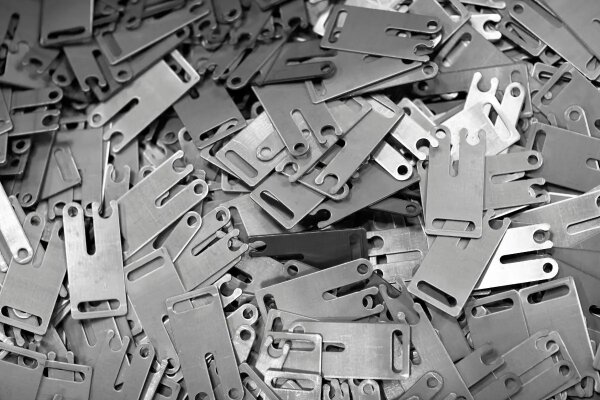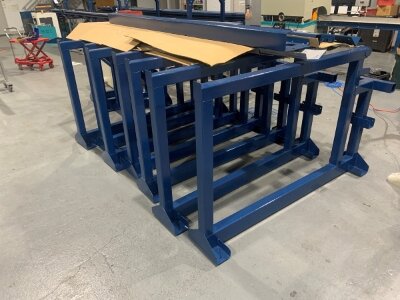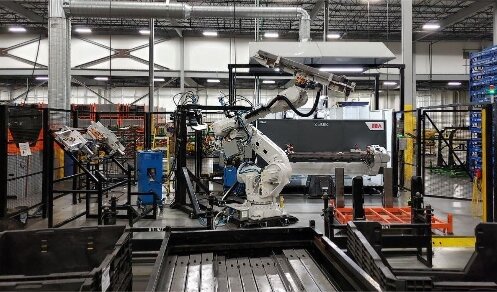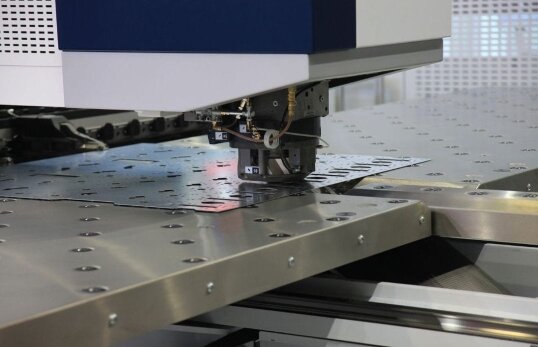Manufacturers need precise, high-quality finishes on cylindrical parts. Traditional grinding methods require extensive setup and continuous adjustments, slowing production. Centerless grinding solves this by eliminating the need for a fixed center point, reducing errors, and improving efficiency.
Unlike conventional grinding, centerless grinding does not require clamping, which speeds up the process. It is widely used in industries requiring high-volume production of precision parts, such as aerospace, automotive, and medical.
What Is Centerless Grinding?
Centerless grinding is a material reduction process that uses a grinding wheel to remove material from the outer diameter of a workpiece. It uses a spinning abrasive wheel to cut material from the outside of a workpiece. Unlike other methods, it doesn’t need clamps or centers to hold the piece in place.
Because it doesn’t require centering, setup is faster and more efficient. It also gives better roundness and precision in the final product. The process allows tight control over the speed and movement of the workpiece, which helps achieve very accurate results.
The key difference from traditional grinding is the lack of fixtures. In cylindrical grinding, the part spins between fixed centers. Centerless grinding relies on the wheels and blade to position and rotate the workpiece. This makes it faster and better for high-volume production.
Core Components of a Centerless Grinding Machine
Precision relies on three critical components working in perfect harmony:
Grinding Wheel: Composition and Role
The grinding wheel is the abrasive cutting tool. It’s made of bonded aluminum oxide or silicon carbide grains. The wheel rotates quickly, shaving off material to achieve tight tolerances and smooth finishes.
Regulating Wheel
The regulating wheel controls the workpiece’s rotation and feed rate. It spins slower than the grinding wheel and has a rubber or resin bond for grip.
Work Rest Blade
The work rest blade supports the workpiece during grinding. It is positioned between the grinding and regulating wheels. The blade is typically made of hardened steel or carbide for durability and precision.
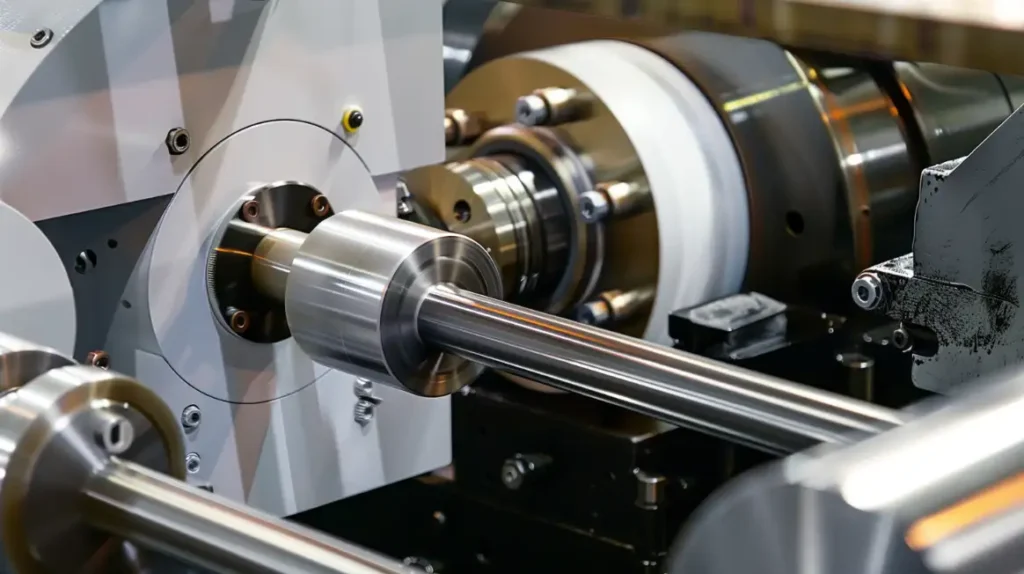
How Does Centerless Grinding Work?
Centerless grinding removes material from cylindrical parts without holding them in place. Instead, it uses two wheels and a simple support system to achieve precision. Here’s how it works step by step:
Workpiece Loading
- The operator places the part on the work rest blade between the grinding and regulating wheel.
- No clamping or centering is needed—the workpiece sits freely.
Wheel Rotation & Contact
- The grinding wheel (larger, abrasive) spins at high speed, cutting material from the workpiece.
- The regulating wheel (smaller, rubber-bonded) rotates slower, controlling the part’s rotation and feed rate.
Material Removal
- As the wheels turn, the workpiece rotates and moves forward (in through-feed grinding) or stays in place (in in-feed grinding).
- The grinding wheel removes excess material, achieving the desired diameter and finish.
Continuous or Controlled Feed
- Through-feed grinding: Parts automatically move straight through the wheels—ideal for long, uniform pieces.
- In-feed grinding: The wheels move inward to grind complex shapes or stepped diameters.
Final Output
- The finished part exits with a smooth, precise, and burr-free surface.
- There are no chuck marks or distortions since no clamping is involved.
Types of Centerless Grinding
Centerless grinding offers versatile solutions for precision machining. Two primary techniques address different manufacturing challenges: through-feed and in-feed grinding.
Through-Feed Grinding
Through-feed grinding is used for long, cylindrical workpieces with a consistent diameter. The workpiece moves continuously between the grinding and regulating wheels without stopping.
- The regulating wheel pushes the part forward while the grinding wheel removes material.
- Ideal for mass production of shafts, rods, and tubing.
- Fast and efficient, but unsuitable for parts with complex shapes or varying diameters.
In-Feed Grinding
In-feed grinding is used for workpieces with complex shapes or varying diameters. Instead of feeding through the machine, the workpiece is held while the grinding wheel moves in to remove material.
- It is best for parts with steps, shoulders, or tapers.
- Allows for precision grinding of specific sections.
- It requires more setup time but delivers highly accurate results.
Technical Specifications
| Parameter | Typical Range | Notes |
|---|---|---|
| Surface Roughness | 0.1 - 1.6 μm | Depends on wheel grit and process parameters |
| Dimensional Accuracy | ±0.01 mm | High precision capability |
| Material Compatibility | Metals, ceramics, hardened steels | Versatile material processing |
| Typical RPM | 1500 - 3500 | Varies by material and wheel specifications |
Key Parameters Affecting Centerless Grinding
Precision in centerless grinding hinges on meticulous attention to multiple critical parameters. Understanding these factors ensures optimal performance and part quality.
Machine Setup and Alignment
A precise setup is the foundation of accurate grinding. Poor alignment leads to defects, wasted material, and inconsistent part quality. Proper adjustments ensure smooth operation, minimal vibration, and precise results.
Common Setup Mistakes and Their Consequences
- Incorrect blade height: Causes uneven grinding and poor roundness.
- Wheel misalignment: This leads to excessive heat, surface defects, and inaccurate sizing.
- Improper feed angle: Affects part movement, leading to variations in diameter and finish.
Material Considerations
This process works well with metals like steel, aluminum, brass, and titanium. Ceramics and hard plastics can also be ground using specialized wheels.
Material Challenges and Solutions
- Hard metals: Require aggressive abrasives to prevent excessive wheel wear.
- Soft materials: Careful pressure control is needed to avoid deformation.
- Heat-sensitive materials: Demand controlled grinding speeds to prevent thermal damage.
Wheel Selection and Dressing
- Grinding wheel: The material and grit size determine the cutting efficiency and surface finish. Aluminum oxide and silicon carbide are common choices.
- Regulating wheel: Controls the workpiece feed and rotation. The hardness and composition affect precision and stability.
Why Regular Wheel Dressing Is Crucial
Grinding wheels wear down over time, reducing cutting accuracy. Regular dressing restores sharpness, removes debris, and keeps the wheel in optimal shape. This ensures consistent results and extends wheel life.
Applications of Centerless Grinding
Centerless grinding has revolutionized precision manufacturing across multiple industries. Its ability to produce high-quality, consistent components makes it a critical process for advanced engineering.
Automotive Industry
Centerless grinding is widely used in automotive manufacturing to produce precision shafts, pistons, and transmission components. It ensures tight tolerances, smooth surfaces, and high production efficiency. The process allows for mass production of engine and drivetrain parts with consistent quality.
Aerospace Sector
Aircraft components require extreme precision and durability. Centerless grinding is used for landing gear parts, turbine shafts, and hydraulic system components. It ensures uniform dimensions and smooth finishes, improving performance and reliability in critical aerospace applications.
Medical and Precision Instruments
Medical devices and surgical tools demand high accuracy. Centerless grinding is used for manufacturing needles, guide wires, and orthopedic implants. It delivers ultra-fine surface finishes and precise dimensions, ensuring safe and reliable medical instruments.
Other Industrial Uses
Many industries rely on centerless grinding for high-precision components. It is used in bearing manufacturing, hydraulics, electronics, and heavy machinery production. The process is ideal for producing consistent quality and efficient rollers, pins, and tubing.
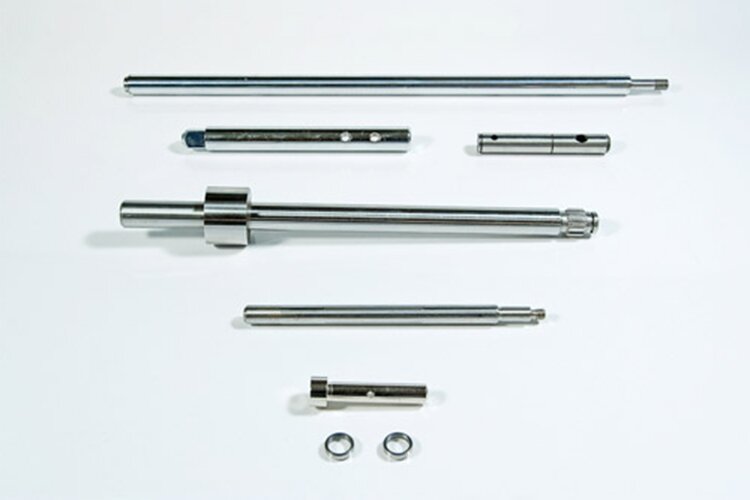
Advantages and Limitations of Centerless Grinding
Centerless grinding represents a sophisticated machining technique with unique strengths and inherent challenges. Understanding its full capability helps manufacturers make informed decisions.
Benefits of Centerless Grinding
High Precision and Repeatability
Centerless grinding produces parts with tight tolerances and excellent surface finishes. The continuous process ensures uniform dimensions and high repeatability, making it ideal for mass production.
Faster Production Rates
Centerless grinding operates at high speeds without the need for workpiece clamping or manual adjustments. This increases throughput, reduces cycle times, and improves overall efficiency.
Reduced Material Waste
The process removes material efficiently while minimizing excess waste. The absence of fixtures or holding devices reduces scrap and optimizes material usage, lowering production costs.
Challenges and Limitations
Setup Complexity
Proper alignment of the grinding wheel, regulating wheel, and work rest blade is critical. Any misalignment can lead to defects, requiring precise setup and skilled operators.
Limited Flexibility for Certain Geometries
Centerless grinding is best suited for cylindrical parts. It struggles with components that have irregular shapes, deep grooves, or shoulders, requiring alternative machining methods.
Heat Generation and Its Impact on Material Properties
High-speed grinding generates heat, which can affect material hardness and integrity. Proper coolant application and controlled grinding parameters are necessary to prevent thermal damage and maintain part quality.
Conclusion
Centerless grinding is a highly efficient machining process for producing precision cylindrical parts. It offers high accuracy, fast production rates, and minimal material waste, making it essential in the automotive, aerospace, and medical manufacturing industries. The right equipment and expertise deliver consistent quality and cost-effective results.
Need high-precision parts for your project? Our team specializes in advanced machining solutions, ensuring accuracy, efficiency, and fast turnaround. Contact us today to discuss your requirements and get a competitive quote!
Hey, I'm Kevin Lee

For the past 10 years, I’ve been immersed in various forms of sheet metal fabrication, sharing cool insights here from my experiences across diverse workshops.
Get in touch

Kevin Lee
I have over ten years of professional experience in sheet metal fabrication, specializing in laser cutting, bending, welding, and surface treatment techniques. As the Technical Director at Shengen, I am committed to solving complex manufacturing challenges and driving innovation and quality in each project.

